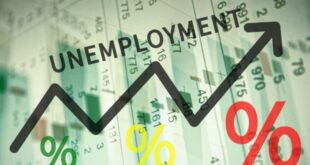U.S. retailers should be looking forward to the 2024 holiday shopping season, because it’s expected to be a solid one.
It will not, however, be anything spectacular, if several forecasts ends up being correct.
Spending on clothing, toys, gift cards, food and other items is expected to grow between 2.5 percent and 3.5 percent compared with 2023, according to the National Retail Federation’s annual Christmas shopping forecast.
If that prediction is accurate, then spending nationwide in November and December will land between $979.5 billion and $989 billion, up from the $955.6 billion that was spent during the last two months of 2023.
The Washington, D.C.-based federation released its forecast Oct. 15.
As 2024 enters its last quarter, the U.S. economy is strong in virtually all categories, said Matthew Shay, the federation’s president and chief executive officer.
“The economy remains fundamentally healthy, and continues to maintain its momentum heading into the final months of the year,” Shay, said in a statement. “The winter holidays are an important tradition to American families, and their capacity to spend will continue to be supported by a strong job market and wage growth.”
Online shopping will again account for a major share of U.S. Christmas spending, continuing a trend that began at least 10 years ago and that gets a little bigger every year.
Online sales, and other out-of-store transactions, are expected to be between $295 billion and $298 billion, an increase of eight percent to nine percent, according to the federation.
Last year’s non-store sales – $233.3 billion – were up 10.7 percent compared with 2022.
Holiday spending usually follows the same patterns as general retail spend during the first 10 months of a year, and 2024 should continue that trend, according to Jack Kleinhenz, the federation’s chief economist.
“We remain optimistic about the pace of economic activity and growth projected in the second half of the year,” Kleinhenz said in a statement. “Household finances are in good shape and an impetus for strong spending heading into the holiday season, though households will spend more cautiously.”
No two holiday shopping seasons are exactly alike and there are several notable differences between this year and last year.
First, there are 26 shopping days between Thanksgiving and Christmas, five fewer than last year. Also, the damage left from Hurricane Helene and Hurricane Milton might change spending patterns, and the impact of the presidential election – regardless of who wins – is impossible to predict.
“I think the (federation’s numbers) will probably turn out to be accurate,” said Robert Kleinhenz, a private economic consultant based in Long Beach who has worked in the Inland Empire. “I think we’ll see another interest rate cut between now and the end of the year, and while I don’t think that will move the needle very much, it should help [spending] a little bit.”
The state of the economy – solid if not spectacular – points to a good holiday shopping season.
“The fundamentals of the economy are good,” Robert Kleinhenz said. “Inflation is under control, and the GDP is strong, a 2.5 to 3.5 percent increase from 2023 feels like an accurate prediction, although it is a little modest.”
Online shopping will continue to grow, but that will not necessary harm traditional retail, much of which has learned how to deal with that trend.
“The good brick-and-mortar retailers that I talk to have adjusted,” Robert Kleinhenz said. “They’ve found out how to operate with it, and they’ve found different ways to remain profitable.”
With more consumer spending expected this year, retailers are preparing to hire full and part-time workers.
The retail federation expects between 400,000 and 500,000 seasonal hires this year, some of which have already begun working to help with the early holiday buying events favored by some retailers.
Challenger, Grey & Christmas Inc., the Chicago-based executive outplacement that every year publishes seasonal forecasts holiday spending and hiring, is predicting 520,000 retail hires during the fourth quarter of this year.
That would be a good number, but it would be well below the roughly 564,000 seasonal hires U.S. retailers made one year ago.
Challenger’s seasonal hiring forecast this year is lukewarm at best. It acknowledges that some retailers say they plan to make a lot of seasonal hires this year, but it points out that a “softening” economy and labor market could mean fewer seasonal jobs this year than last year.
“This prediction considers that gains are falling, and consumers have tightened spending,” said Andrew Challenger, senior vice president of Challenger, Gray & Christmas, Inc., in a statement. “That said, the cooling seems to be slow. Seasonal employers will add jobs, but need may fluctuate as the season progresses.”
Still, some major retailers plan to make major hires this year, starting with Amazon. The online retail giant announced early this month that it plans to hire 250,000 full and part-time seasonal employees, mostly for customer-fulfillment – receiving and managing orders – and transportation positions.
That plan is similar to Amazon’s seasonal hiring last year.
Other companies planning to add to its workforce this year to handle the holiday shipping rush include Target (100,000 employees) Macy’s (31,500), Kohl’s (90,000), Walmart (40,000), and JC Penney (10,000).
“Those numbers make sense,” Robert Kleinhenz said. “There will be a lot of buying, so there will be a lot of shipping. So those numbers don’t surprise me at all, and they will probably end up being pretty accurate.”
 IE Business Daily Business news for the Inland Empire.
IE Business Daily Business news for the Inland Empire.


